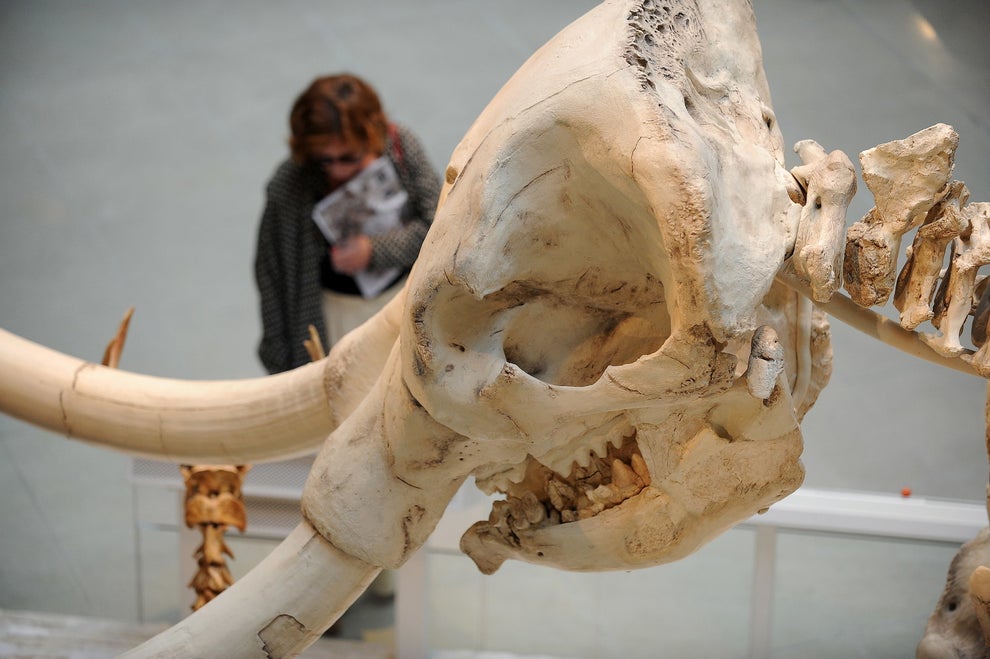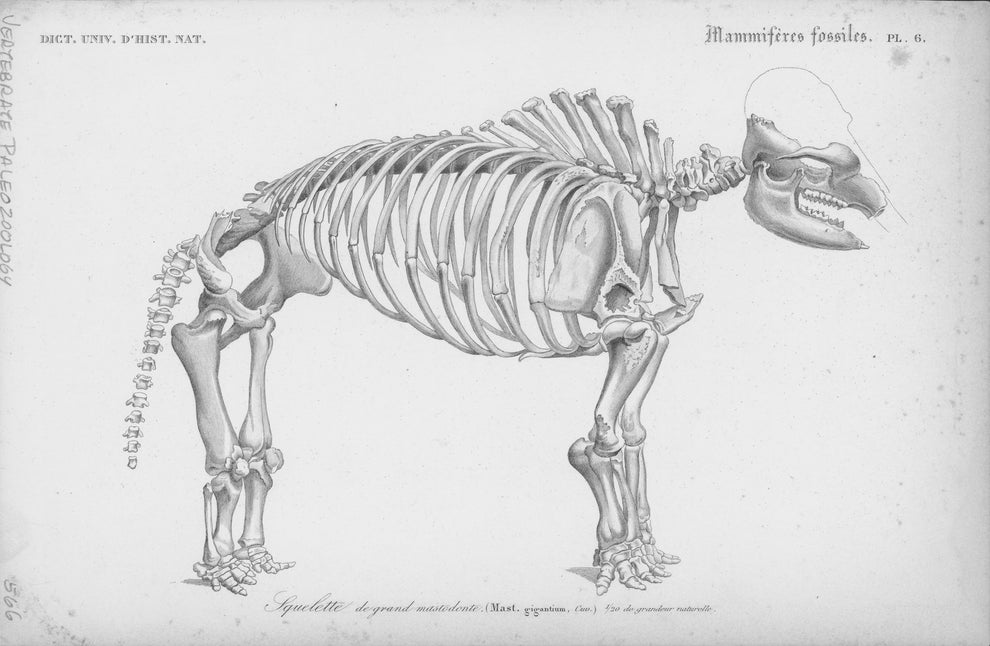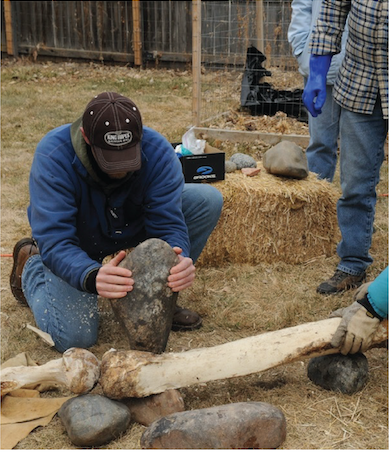Scientists are bashing a big study claiming that people lived in the Americas 100,000 years earlier than was thought. “I was astonished by it. I was astonished not because it is so good, but because it is so bad,” one said.
 Old individuals butchered a mastodon, pounding its bones for marrow with rocks, somewhere in the range of 130,000 years prior in California, as indicated by another archeological review.
Old individuals butchered a mastodon, pounding its bones for marrow with rocks, somewhere in the range of 130,000 years prior in California, as indicated by another archeological review. The unprecedented claim, made about an ancient bone bed under what is currently an expressway outside cutting edge San Diego, would set back the age of the main human precursors in the Americas by over 100,000 years.
Yet, a huge number of free fossil specialists reached by BuzzFeed News think the report, distributed on Wednesday in the diary Nature, is insane.
"I have perused that paper and I was surprised by it," classicist Donald Grayson of the University of Washington revealed to BuzzFeed News. "I was dumbfounded not on the grounds that it is so great, but rather on the grounds that it is so terrible."
The significantly more probable clarification, as indicated by Grayson and different doubters, is that the bones were pulverized not by antiquated people, but rather by bulldozers cutting another expressway in the 1990s.
Past reviews, in light of hereditary investigations and archeological confirmation, recommend that the predecessors of Native Americans landed in North America at most 25,000 years back. They touched base by watercraft and by walking, traverse a land connect over the Bering Strait as an Ice Age finishedThe unbelievably old date in the new review recommends that relatives of Neanderthals — the wiped out cousins of present day people — arrived and spread crosswise over North America far prior, which would be a progressive overturning of tried and true way of thinking.
"We expect wariness," think about lead creator Steven Holen of the Center for American Paleolithic Research in Hot Springs, South Dakota, said at an instructions for columnists on the new review. "I was profoundly distrustful myself.
 In 1992, a California Department of Transportation street evaluating machine revealed the bones of a mastodon, an antiquated elephant that once wandered generally crosswise over North America, while building State Route 54 outside San Diego. Scientist Tom Deméré of the San Diego Natural History Museum drove a group that unearthed the Cerutti Mastodon.
In 1992, a California Department of Transportation street evaluating machine revealed the bones of a mastodon, an antiquated elephant that once wandered generally crosswise over North America, while building State Route 54 outside San Diego. Scientist Tom Deméré of the San Diego Natural History Museum drove a group that unearthed the Cerutti Mastodon. Deméré, Holen, and their associates now report that radioactive dating of those bone specimens by US Geological Survey researcher James Paces sets their age to 130,000 years prior, give or take 9,000 years.
Their age is not shocking, as the site was known to be a home for old mastodons, a bog brimming with creatures close to a wonderful stream. Much more momentous is the researchers' claim that stones gathered close by the bones were sledges and blacksmith's irons utilized by ancient people to butcher amusement.
The pachyderm leg bones, molars, and tusks were discovered split in winding examples and separated from whatever remains of the skeleton. The tips of a few bones were severed. They didn't look like breaks from trampling, or drying out, or other normal weathering seen on the close-by fossils of a camel and a pig-like ungulate, either, and they were strangely gathered together

A bone breakage experiment on an elephant’s leg bones in an attempt to determine the kinds of breakage patterns resulting from hammerstone percussion. Kate Johnson, San Diego Natural History Museum
The team went so far as to smash the bones of a dead elephant in Tanzania with a stone hammer to replicate the fractures seen on the ancient mastodon femurs. Similar practices of smashing bones with stone hammers date back more than 1 million years ago to sites of archaic human ancestor species in Africa.
The “really compelling” evidence, Deméré said, “leads us to conclude that humans processed mastodon limb bones at the site of its burial 130,000 years ago.”
Other scientists, however, are not convinced. They point out that the study does nothing to refute a more plausible explanation: that highway equipment crushed the bones
"The paper expresses that [the] bones were being uncovered by an escavator," fossilization master Gary Haynes of the University of Nevada Reno disclosed to BuzzFeed News by email. "These bits of overwhelming gear measure seven to fifteen tons or more, and their weight on the dregs would have smashed bones and shakes against each other."
Whenever asked, Holen, the review pioneer, said that it "was anything but difficult to differentiate" between cracks made by stone mallets and those found in bones pulverized by bulldozers. He didn't expand on how the distinctions show.
"He's basically dead wrong — there's no determinable distinction," Haynes said. A comparative fossil debate softened out up 2015 over a 24,000 year old mammoth in Maryland, he noted, appeared to be cracked by substantial hardware

Likewise alarming, the "sledge" and "iron block" stones portrayed in the paper don't unequivocally look like instruments, said Michael Waters of Texas A&M's Center for the Study of the First Americans.
The review likewise crosses paths with the mounting hereditary confirmation, Waters included, "which demonstrates that the primary individuals to achieve the Americas and in the long run offer ascent to current Native Americans arrived no sooner than 25,000 years prior."
Both the revelation group and its faultfinders summoned the logical bromide that "remarkable cases require phenomenal proof" as a test to the contradicting camp.
Split bones and chipped stones at a fossil site may mean anything, said Grayson. "It is very another [thing] to demonstrate that individuals, and individuals alone, could have delivered those changes."
The review doesn't make that stride, he stated, "making this a simple claim to expel."
Toward the finish of the press instructions, Holen was asked whether he considered his review and accuse the mastodon cracks for UFOs or Bigfoot. "I expect there will be some uncommon cases," he answered, "not simply by doubters, but rather other
No comments:
Post a Comment